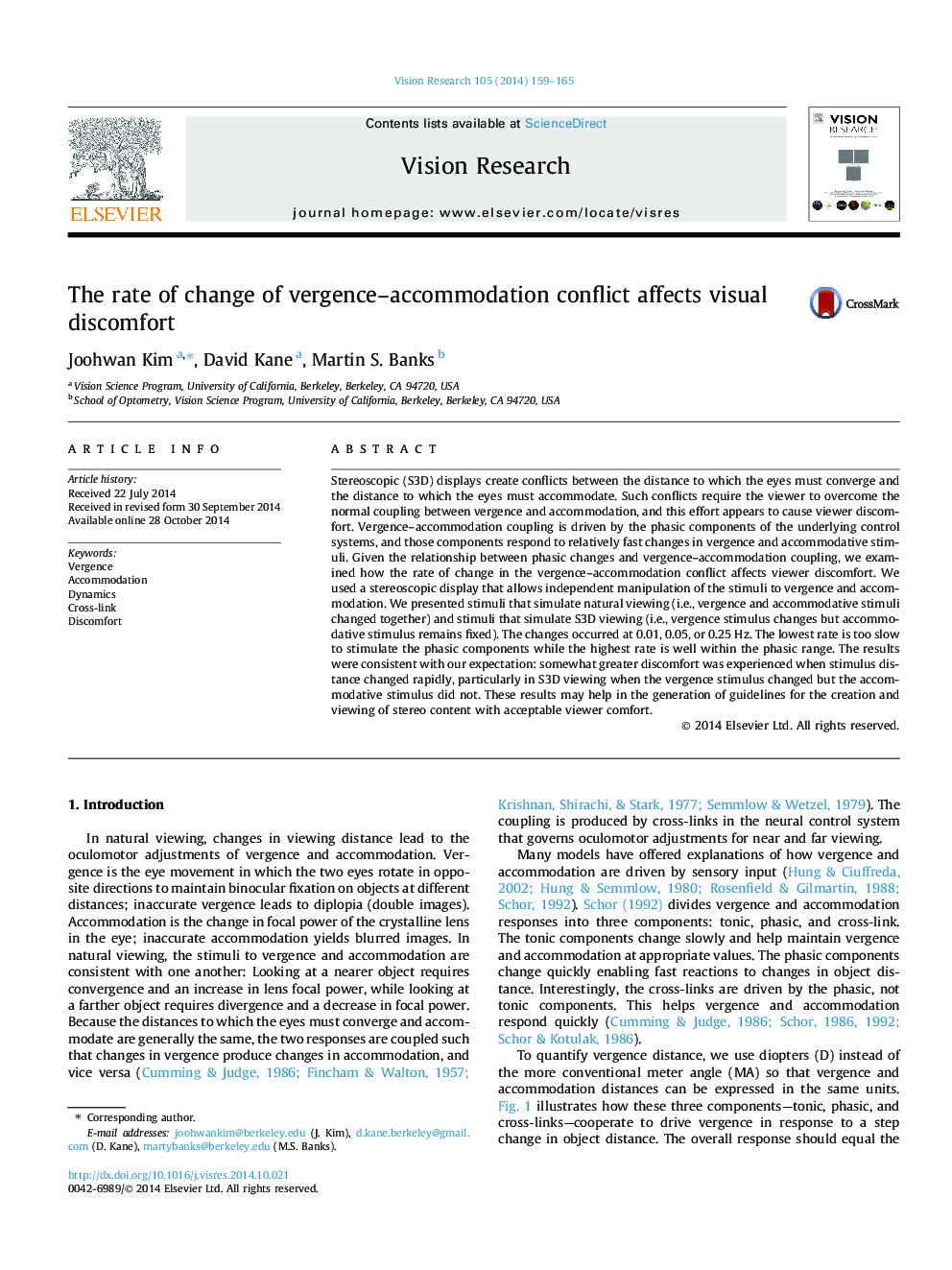| کد مقاله | کد نشریه | سال انتشار | مقاله انگلیسی | نسخه تمام متن |
|---|---|---|---|---|
| 6203291 | 1603189 | 2014 | 7 صفحه PDF | دانلود رایگان |
- Vergence-accommodation conflicts that vary quickly cause more visual discomfort than conflicts that vary slowly.
- We tested three temporal frequencies of conflict modulation: 0.01, 0.05, and 0.25Â Hz.
- At 0.01 and 0.05Â Hz, visual discomfort due to natural and S3D viewing did not differ significantly.
- At 0.25Â Hz, visual discomfort due to S3D viewing was significantly worse than that due to natural viewing.
Stereoscopic (S3D) displays create conflicts between the distance to which the eyes must converge and the distance to which the eyes must accommodate. Such conflicts require the viewer to overcome the normal coupling between vergence and accommodation, and this effort appears to cause viewer discomfort. Vergence-accommodation coupling is driven by the phasic components of the underlying control systems, and those components respond to relatively fast changes in vergence and accommodative stimuli. Given the relationship between phasic changes and vergence-accommodation coupling, we examined how the rate of change in the vergence-accommodation conflict affects viewer discomfort. We used a stereoscopic display that allows independent manipulation of the stimuli to vergence and accommodation. We presented stimuli that simulate natural viewing (i.e., vergence and accommodative stimuli changed together) and stimuli that simulate S3D viewing (i.e., vergence stimulus changes but accommodative stimulus remains fixed). The changes occurred at 0.01, 0.05, or 0.25Â Hz. The lowest rate is too slow to stimulate the phasic components while the highest rate is well within the phasic range. The results were consistent with our expectation: somewhat greater discomfort was experienced when stimulus distance changed rapidly, particularly in S3D viewing when the vergence stimulus changed but the accommodative stimulus did not. These results may help in the generation of guidelines for the creation and viewing of stereo content with acceptable viewer comfort.
Journal: Vision Research - Volume 105, December 2014, Pages 159-165
